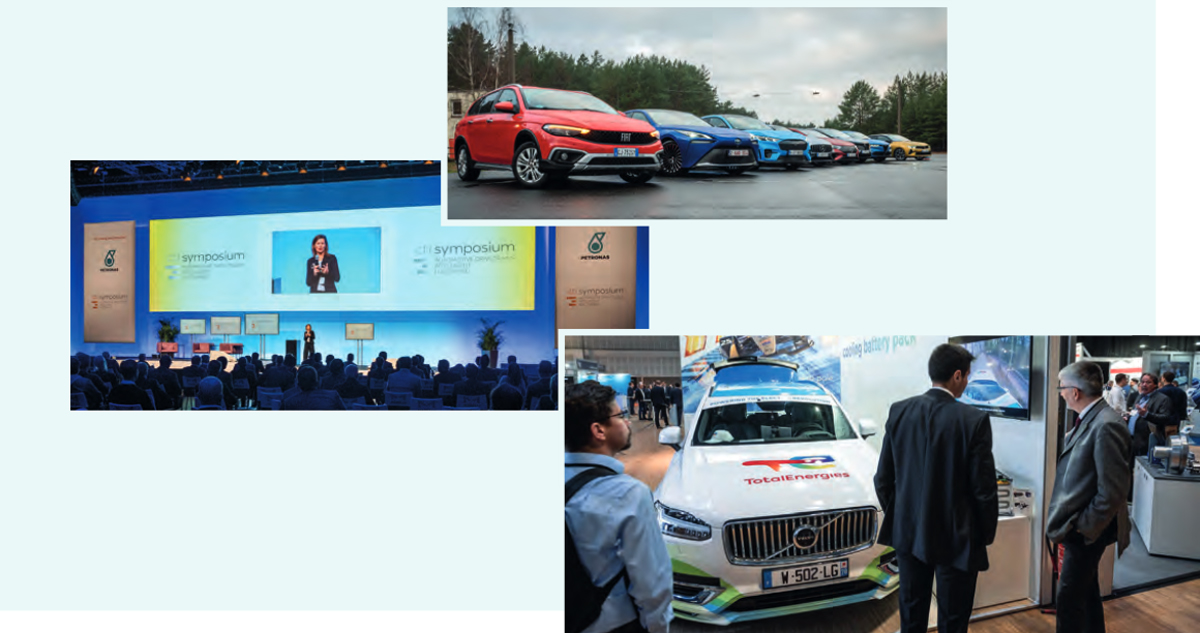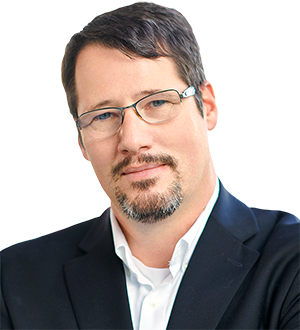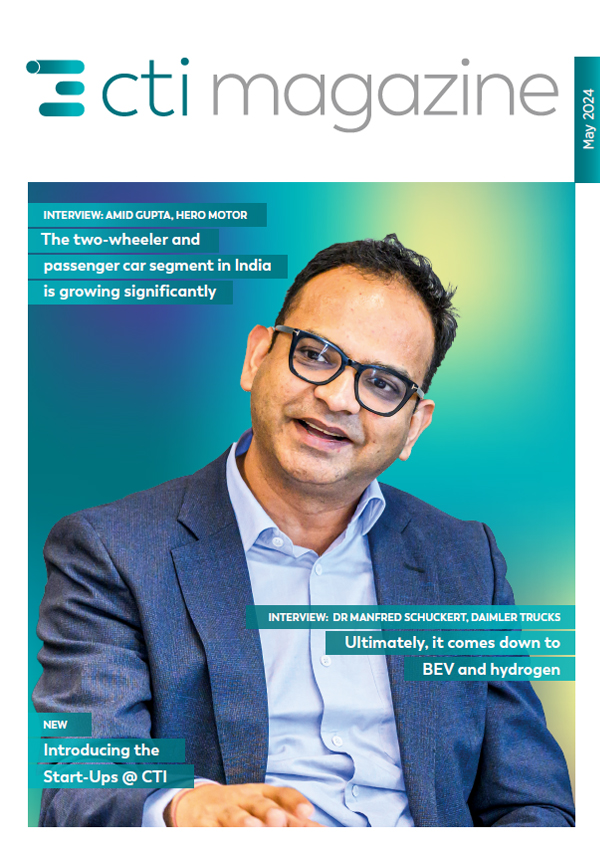
Gernot Goppelt, CTI Correspondent
To better reflect the road to climate-neutral mobility, our CTI Symposia Novi and Berlin are expanding their range of topics for 2023. In addition to electric drives and components, the presentations and discussions will also cover topics such as sustainable mobility, renewable energies and upstream CO2 reduction. One question is becoming more and more important: Where do the system borders of tomorrow’s powertrains lie?
This year, the CTI Symposium USA (24 – 25 May) is being held for the seventeenth time, and the CTI Symposium Berlin (December) for the twenty-second. The powertrain industry has changed much faster in recent years than during the decades that preceded them. In response, what began as a transmission conference now focuses on electrified powertrains – and on requirements that extend beyond them.
Electrification is evolving rapidly
In the early years, CTI symposia were dominated by manual and automatic transmissions, with CVTs and dual-clutch transmissions joining the agenda soon after. For years, the pros and cons of these systems were the main topic of discussion. But from around 2010 on, it became clear that hybridization and electrification would have a growing role to play. Accordingly, the symposia name was updated to “Automotive Transmissions, Hybrid & Electric Drives”.
As hybridization spread, the variety of topics grew almost exponentially. Do we need 48 V mild, full or plug-in hybrids? How do we integrate electrification in transmissions? In 2015, a new type of transmission was defined when Prof. Ferit Kücükay, chair of the CTI Symposium Berlin from the very start, and Robert Fischer of AVL introduced the DHT or Dedicated Hybrid Transmission. This marked a step towards dominant electric motors in hybrid drives, with transmissions that were significantly less complex mechanically.
Around the same time, it also became apparent that batteryelectric drives were rapidly gaining momentum. A few years later, almost all manufacturers had added one or more BEVs to their portfolio. As OEMs and suppliers invested heavily in electrification technology, new work profiles emerged. Today, mechanical engineers need to extend their expertise into fields such as electrical engineering, IT & software, and ‘system thinking.
CTI symposia: driving the path to carbon-neutral mobility
As a glance at the plenary program shows, the upcoming symposium in Novi (24 – 25 May 2023) reflects these developments in its lectures and discussions. Topics will include electric drive units, e-motors, batteries, thermal management, NVH, inverters and other power electronics, plus more besides. These have largely replaced ‘classic’ transmission topics, except in electrified applications. Another keytopic for the development community, particularly in North America, is truck electrification. This poses a particular challenge for all-electric drives.
At Novi and Berlin, the in-depth discussion will also cover topics that sit above component level. Looking beyond powertrain boundaries, several important questions need to be asked: How can we quickly build up and expand energy and charging infrastructures? What is the impact of international dependencies on raw materials? What emission regulations do we need to address, including for BEV? Will we see CO 2 assessments based on well-to-wheel or even lifecycle figures? And last but not least, new development methods like ‘Digital Twin’ will be on the agenda too.
That said, the symposia are still open for all available powertrain technology options. The discussion will include the use of hydrogen or e-fuels, and we know that specific global regions may still require solutions such as hybrid drives. In any region, the energy infrastructure will be the defining factor for which powertrain solutions make sense. While the future is very likely to be electric, the path that leads there calls for a blend of two factors: constructive competition, and cooperation. Today and tomorrow, CTI symposia are a key platform on which to co-create a sustainable future for mobility.
 Patrick Lindemann, Chairman of the CTI Symposium USA, Novi
Patrick Lindemann, Chairman of the CTI Symposium USA, Novi
Looking back over the last ten years, what has changed for powertrain developers?
The industry has practically been turned upside down in a few years. I’ve been with CTI USA since the beginning. At first, we fought to reduce pollutant emissions and improve efficiency. But it quickly became clear that above all else, CO2 emissions are critical. Combustion engines and multispeed transmissions have become much less significant, while electric drives are gaining ground fast. And in ten to twenty years’ time, it’s likely that fossil fuels will hardly feature at all in daily life.
What new issues do we need to address beyond the powertrain?
In my opinion, advancing renewable energies is critical, to name just one point. Ultimately, I think they will be even more cost-effective. We will move away from large power plants to decentralized power generation such as solar panels etcetera. Obviously, the infrastructure needs to be built up in both the energy and charging sectors. That’s why we’ve added these topics to the agenda, because we need to see powertrains as part of a bigger energy structure.
How do you see your future role as Chairman of the CTI Symposium USA?
I would like to involve the auditorium even more, and to listen carefully. What are the biggest pain points, where do we need to find solutions together? We shouldn’t just see ourselves as competing companies; we should push forward the best technologies together. The CTI Forum is ideal for meeting and discussing this. As engineers, our mission is to share and transfer knowledge so we can move forward as a whole society.
 Prof. Malte Jaensch, incoming Chairman of the CTI Symposium Germany, Berlin
Prof. Malte Jaensch, incoming Chairman of the CTI Symposium Germany, Berlin
How has the automotive industry changed in your view?
Ten years ago, electric drives were often not taken seriously. Today, the prevailing opinion – which I share – is that the future will be electric. The transformation is in full swing. For example, many trained mechanical engineers now have to get much more involved in electrical engineering. The same goes for teaching: At our interdisciplinary Automotive Engineering course at the Technical University of Munich, we combine classic automotive engineering with electrical engineering and computer science.
How should we ‘think powertrains’ in future?
In the long term, I see electric cars as the best way to reduce CO 2 . But we shouldn’t see that as a closed system. If you want to reduce CO2 on a large scale, you also have to include the technical environment, which means the charging infrastructure and green electricity. And of course, electric cars can also store energy and provide it to the local infrastructure. In this sense, they are an important piece of the greater energy transition puzzle. They provide mobility, and can also serve as a stabilizing buffer.
How will the CTI Symposium Berlin reflect these changes?
For me, CTI has always been an event that is well organized, with a good exhibition and excellent networking opportunities. Moving forward, one key question is: Where does the system boundary of the powertrain lie? Transmissions will still be there, but now other topics are coming to the fore – for example batteries, infrastructure, energy supply, autonomous driving, etcetera. On the other hand, we don’t want to stretch the field too far. Our brand essence is still the vehicle powertrain. And our primary target group is the community of engineers who are working on the powertrain of the future.
